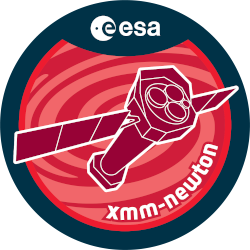

| Proposal ID | 069139 |
| Title | Revealing the nature of the SNR G15.4+0.1 with XMM-Newton |
| Download Data Associated to the proposal | https://nxsa.esac.esa.int/nxsa-sl/servlet/data-action-aio?obsno=0691390101 |
| DOI | https://doi.org/10.5270/esa-qxsbwn4 |
| Principal Investigator, PI | Dr Petter Hofverberg |
| Abstract | TeV gamma-ray emission was recently detected from the direction of theshell-type supernova remnant G15.4+0.1 by H.E.S.S. The TeV morphology suggests acenter-dominated source at these energies, which suggests that H.E.S.S. may beobserving emission from a pulsar wind nebula located within the shell-like radioboundary of the SNR and that G15.4+0.1 is actually a composite SNR. The observedTeV flux implies an X-ray flux well within the sensitivity of XMM-Newton, evenat low levels of the ambient magnetic field. Therefore, as a part of an ongoingmulti-wavelength effort, we propose to observe this source with XMM-Newton withthe primary aim to detect the putative pulsar wind nebula inside G15.4+0.1 inX-rays and thus establishing this SNR as a composite. |
| Publications |
|
| Instrument | EMOS1, EMOS2, EPN, OM, RGS1, RGS2 |
| Temporal Coverage | 2012-10-10T01:29:50Z/2012-10-10T10:21:49Z |
| Version | 17.56_20190403_1200 |
| Mission Description | The European Space Agencys (ESA) X-ray Multi-Mirror Mission (XMM-Newton) was launched by an Ariane 504 on December 10th 1999. XMM-Newton is ESAs second cornerstone of the Horizon 2000 Science Programme. It carries 3 high throughput X-ray telescopes with an unprecedented effective area, and an optical monitor, the first flown on a X-ray observatory. The large collecting area and ability to make long uninterrupted exposures provide highly sensitive observations. Since Earths atmosphere blocks out all X-rays, only a telescope in space can detect and study celestial X-ray sources. The XMM-Newton mission is helping scientists to solve a number of cosmic mysteries, ranging from the enigmatic black holes to the origins of the Universe itself. Observing time on XMM-Newton is being made available to the scientific community, applying for observational periods on a competitive basis. |
| Creator Contact | https://www.cosmos.esa.int/web/xmm-newton/xmm-newton-helpdesk |
| Date Published | 2013-10-31T00:00:00Z |
| Last Update | 2025-08-04 |
| Keywords | "XMM", "radio boundary", "XMM-Newton", "G15.4", "low levels", "tev morphology", "xray flux", "center dominated source", "xmm newton", "supernova remnant g15", "tev flux implies", "ambient magnetic field", "multi wavelength effort", "composite supernova remnant", "supernova remnant" |
| Publisher And Registrant | European Space Agency |
| Credit Guidelines | European Space Agency, Dr Petter Hofverberg, 2013, 'Revealing the nature of the SNR G15.4+0.1 with XMM-Newton', 17.56_20190403_1200, European Space Agency, https://doi.org/10.5270/esa-qxsbwn4 |